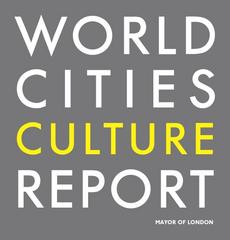Global cities may share skylines of glass and steel, but daily life within them is anything but uniform. From Tokyo’s hushed subway cars and precision timetables to Mexico City’s exuberant street life and late‑night dining, the rhythms, rules and rituals that shape urban experience diverge sharply across continents.
As brands, technology and migrants crisscross borders, the expectation of cultural convergence is giving way to a more complex map of difference-visible in everything from store hours and weekend norms to public-space etiquette, nightlife curfews and festival calendars. These contrasts are more than curiosities: they influence how cities court tourists and talent, how companies localize strategies, and how policymakers design transport, housing and public safety. This report examines where and why those cultural fault lines are widening, and what they mean for the future of urban life.
Table of Contents
- Transit and Public Space Shape Daily Life in Tokyo Paris and Lagos
- Housing Costs Street Food and Nightlife Expose Inequality and Resilience
- What City Leaders Should Do Now and What Travelers Should Seek Out
- The Conclusion
Transit and Public Space Shape Daily Life in Tokyo Paris and Lagos
Across three continents, commuters and pedestrians negotiate daily routines in radically different arenas: in Tokyo, precision-timed railways and hushed platforms set the cadence for work and leisure; in Paris, pedestrianized boulevards and café terraces double as civic stages; in Lagos, informal transit ecosystems spill into streets where markets, minibuses, and motorbikes compete for space. Station plazas in Japan function as retail corridors and social junctions, Paris’s quays and squares toggle between festival and protest, and Lagos’s bus rapid transit offers a structured spine amid the danfo network’s fluidity. These contrasts determine access to jobs, cost of living, evening safety, and even how long families spend together. Urban authorities test new rules-cashless fares, low-emission zones, okada restrictions-while residents adapt in real time, revealing how infrastructure and public space silently govern opportunity, mobility, and the pace of city life.
- Tokyo: Hyper-reliable metros, station malls, and pocket parks normalize quiet commutes and tightly scheduled days.
- Paris: Sidewalk culture, car-light corridors, and cycling networks anchor routines that mix work, social life, and protest.
- Lagos: BRT corridors intersect with informal routes and curbside commerce, creating flexible yet congested mobility.
Housing Costs Street Food and Nightlife Expose Inequality and Resilience
Across São Paulo, Seoul, Nairobi, and New York, surging housing bills are pricing workers out of central districts even as curbside grills and late-night stalls keep the city fed; meanwhile, high-end clubs rebound faster than community venues, creating a split after-hours economy that reveals who can afford to stay, who must commute, and how neighborhoods mobilize to protect their social fabric.
- Rents outpacing pay: Displacement pushes service workers to peripheral zones, lengthening commutes and thinning late shifts in hospitality corridors.
- Street food as shock absorber: Vendors pivot to inflation-resistant staples, extend informal credit, and adopt mobile wallets to hold price-sensitive regulars.
- Divergent nightlife: Bottle-service districts thrive while DIY scenes retreat to warehouses and rooftops, vulnerable to enforcement sweeps and noise crackdowns.
- Community resilience: Tenant unions crowdsource data on illegal hikes; vendor groups coordinate sanitation; club coalitions pilot safe-ride funds and neighborhood quiet-hour pacts.
What City Leaders Should Do Now and What Travelers Should Seek Out
As cultural contrasts sharpen across global capitals, policy and itinerary choices converge: authorities are moving to protect the vernacular city while travelers gravitate to street-level authenticity, with both sides urged to prioritize access, safety, and transparency now.
- Safeguard vernacular culture by protecting traditional markets, rehearsal spaces, and artisan workshops through zoning, anti-displacement tools, and heritage business registries.
- Invest in multilingual infrastructure across transit, wayfinding, and digital portals to ensure visitors and newcomers can navigate civic services and cultural programming without barriers.
- Design for night and heat with lighting upgrades, shaded corridors, and cooling hubs that keep streets lively and safe beyond office hours and during climate stress.
- Ease permits for street culture so buskers, food carts, pop-up galleries, and night markets can operate legally, visibly, and fairly, backed by predictable fees and clear rules.
- Fund neighborhood stages-small venues, community theaters, and micro-museums-supported by grants tied to affordable rents and inclusive hiring.
- Publish cultural access metrics (late-night transit frequency, venue affordability, gender safety audits) to guide investment and build public trust.
- Connect districts with frequent, safe transit and pedestrian links between museums, independent venues, and market streets to disperse crowds and broaden spend.
- Neighborhood festivals and micro-museums that showcase living traditions, not just headline institutions.
- Morning markets and late-night canteens where seasonal foods, dialects, and daily rituals intersect.
- Public libraries and civic centers offering free exhibitions, local history archives, and community bulletin boards.
- Community-led tours by resident historians, artists, and urban naturalists for context beyond postcard views.
- Indie cinemas, contemporary galleries, and maker spaces to track emerging voices in film, art, and design.
- Diaspora enclaves for cross-border cuisines, festivals, and newspapers that map a city’s global ties.
- Transit art and station districts where murals, busking, and small venues cluster near high-frequency lines.
- Regional media-alt-weeklies, community radio, and neighborhood newsletters-to time visits with hyperlocal events.
The Conclusion
As the data make clear, the world’s leading cities are converging economically while diverging in the rhythms of daily life, social norms, and public space. These contrasts are shaping everything from housing markets and mobility choices to cultural policy and civic identity. For urban planners, business leaders, and residents, the challenge is less about choosing a model than navigating difference-leveraging local strengths while staying connected to global flows. With migration, technology, and climate pressures accelerating change, the next chapter of urban life will be defined not by uniformity, but by how cities translate their distinct cultures into resilient, livable futures.


